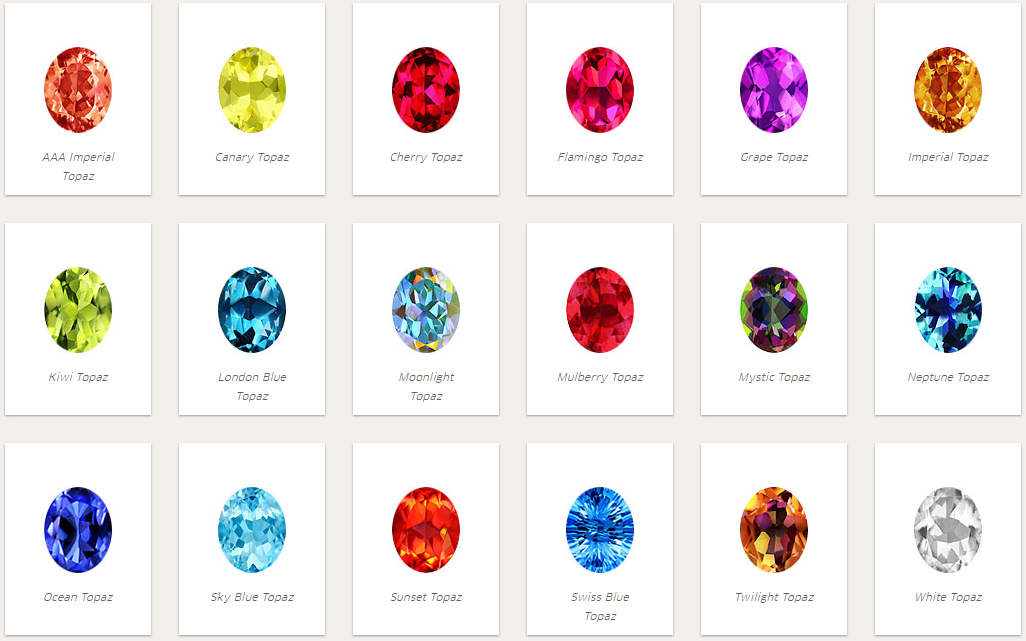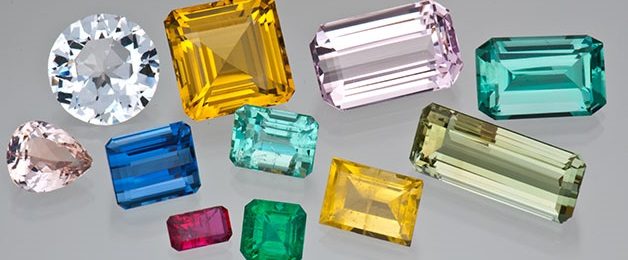Identifying Topaz
Topaz is a gem that comes in various colour shades, these shades are so varied that inexperienced eyes can often mistake Topaz for Citrine, Apatite, Zircon, Fluorite, Kunzite or Tourmaline. One of the main criteria for recognising a Topaz is its hardness. Topaz is one of the toughest gems, since its hardness is just two points below below a Diamond – an 8 on Mohs scale. Topaz is only softer than Diamond, who of course rates a 10 and also than Ruby and Sapphire who have a 9 on Mohs scale.
Regarding the chemical composition of Topaz, this gem is a hydrous aluminum fluorosilicate with a unique crystal structure making it a hard and dense gemstone.Topaz is perfectly transparent like few other gems, with a beautiful, soft velvety brilliance due to its high refraction and transparency.
Another feature of this precious stone is its marked pleochroism, an optical effect where the same gem shows different colours depending on the angle of observation.

Moonlight Topaz and Mystic Topaz
The Many Colours of Topaz
When choosing a Topaz, colour can have a double meaning. It can be useful in the identification of the gem, but at the same time can be confusing to an inexperienced eye, because of its many nuances.
Topaz has a large variety of colours: colourless, white, yellow, orange, dark blue, pink to red, purple and light green. This is why it can be mistaken for many other precious stones. Topaz is coloured by iron and chromium, colours indicate impurities in the gem while pure Topaz is colourless. The most rare and precious variety is yellow, pink or even red-orange. These hues can be confused with Citrine but Topaz generally has a warmer colour, with a very clear gradient from orange or pink. In addition, the shine of this stone is far superior. It is important to note that the colour intensity in some Topaz varieties can fade if exposed to too much sunlight.
It is incredibly rare to find a red or purple Topaz, but they do exist! Some Topaz gems are treated to enhance their colour but in these cases it will always be stated and certified as such.

Topaz is available in a variety of colour choices.
Focus on purity and brilliance
Topaz can range from transparent to translucent. It is a gem with a high transparency and a few inclusions, so can be easily examined with the naked eye: Topaz generally appears “eye clean”, which means they do not show imperfections. Topaz is highly regarded for its brilliance and its lustre is almost glassy.
Variety in the cut and shapes
A great peculiarity of topaz is its versatility.
This gemstone can be cut into a variety of shapes: oval, round, octagonal, rack, baguette, cushion, and heart. Those gems with a less intense colour lend more to be cut almost perfectly. The facets highlight the clarity and brilliance of the gem, and when a Topaz has irregular inclusions a cabochon cut is generally preferred.
As we have already discussed, hardness is important as the harder the gem, the more scratch resistant it is. Gemstone cutters have to be very careful because just because of his point of perfect cleavage, it can easily break.

London Blue Topaz Loose Gemstones
Visit Rocks & Co. today for gorgeous jewellery featuring Topaz gems >






